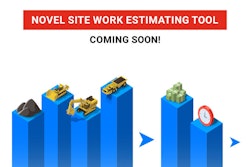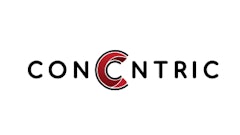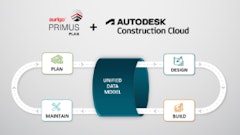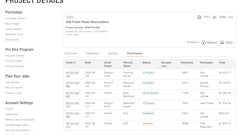
For many construction business owners, the process of bidding for projects has always been a fairly straightforward equation that involves some math, some guesswork and often a stubborn adherence to "the way we've always done it."
Back in the go-go days when times were flush and work flowed, these formulas seemed to work well enough. Jobs came in, crews remained busy and there were profits to show for it at the end of the day.
Over the last several years, however, the industry's prolonged downturn has forced closer examination of these business practices. Competition for work has been the fiercest in a generation. Business owners have struggled to find new opportunities to fill their project pipelines. And when bids are lost, those in charge of estimating jobs may wonder why the old methods no longer seem to be working.
Successful bidding comes down to a clear understanding of a few important variables – costs (both fixed and variable), overhead and a company's true break-even point. In this first installment of a two-part series, we'll examine the concept of "mixed costs" and their role in producing more accurate bids.
Traditionally, "cost" has been defined as the sum total of fixed and variable expenses required to complete a project. But a third kind of expense, called a "mixed cost," is one that is neither totally fixed nor totally variable. This hybrid category is not simply a matter of semantics, but rather a key component in a contractor's overhead – a component that, once understood and mastered, can help you win more of the jobs that are worth winning.
In an ideal world of purely fixed and variable costs, profits are made once you pass your break-even point. Table 1 shows two sales scenarios. Materials and direct labor are variable costs because they vary proportionally to the jobs or sales in hand. Indirect labor and other overhead are fixed costs because they are incurred no matter how slow or busy you are throughout the year.
Table 1
|
Sales |
$1,000,000 |
100% |
$2,000,000 |
100% |
|
|
|
|
|
|
|
|
|
Variable costs |
|
|
|
|
|
|
Materials |
200,000 |
20% |
400,000 |
20% |
}55% |
|
Direct labor |
350,000 |
35% |
700,000 |
35% |
|
|
|
550,000 |
55% |
1,100,000 |
55% |
|
|
Contribution to Overhead |
450,000 |
45% |
900,000 |
45% |
|
|
Fixed Costs |
|
|
|
|
|
|
Indirect labor |
250,000 |
25% |
250,000 |
13% |
|
|
Other overhead |
200,000 |
20% |
200,000 |
10% |
|
|
Total overhead |
450,000 |
45% |
450,000 |
23% |
|
|
|
|
|
|
|
|
|
Profit |
$ - |
0% |
$450,000 |
23% |
|
When comparing the two sales scenarios, note that the percentage of variable costs to sales remains the same, while the dollar values of fixed costs to sales also remain the same. Clearly, the $2 million sales scenario highlights the advantage of these fixed costs. With sales significantly above break-even, a profit is produced that is equal to the contribution to overhead (your sales minus your variable costs) of 45% (100% less 55%), once you go above your break-even sales level of $1M ($450,000 equals 45% of the sales above break-even).
Table 2 shows a more real-world picture where mixed costs come into play. Here, we have re-categorized 50% of the owner's theoretical $100,000 salary from indirect to direct labor, to account for the fact that half of his time is actually spent in the field managing the work of specific projects.
Table 2
|
Sales |
$ 1,000,000 |
100% |
$ 2,000,000 |
100% |
|
|
|
|
|
|
|
Materials |
200,000 |
20% |
400,000 |
20% |
|
Direct labor |
400,000 |
40% |
800,000 |
40% |
|
Indirect labor |
200,000 |
20% |
200,000 |
10% |
|
Other overhead |
200,000 |
20% |
200,000 |
10% |
|
Total expenses |
1,000,000 |
100% |
1,600,000 |
80% |
|
|
|
|
|
|
|
Profit |
$ - |
0% |
$ 400,000 |
20% |
Comparing Tables 1 and 2 shows how easy it is to be fooled by the numbers, even though we know that simply moving a cost from one line to another would not affect profitability.
But it does raise several important questions. Does your current estimating process accurately account for your company's real-world costs? Would fine-tuning the process give you a better handle on your expenses and your true break-even point? And, would this understanding lead to more accurate – and ultimately more successful – project bids on jobs that are worth winning?
Now let's consider a scenario that many construction pros have grown uncomfortably familiar with – a decrease in sales. In Table 3 we see that our direct labor costs have increased as a percentage, not because of added workers, but because sales volume has declined.
Table 3
|
|
|
|
In Theory |
|
Actual |
|
|
Sales |
$ 1,000,000 |
100% |
$ 800,000 |
100% |
$ 800,000 |
100% |
|
|
|
|
|
|
|
|
|
Cost of materials |
200,000 |
20% |
160,000 |
20% |
160,000 |
20% |
|
Direct labor |
400,000 |
40% |
320,000 |
40% |
400,000 |
50% |
|
Indirect labor |
200,000 |
20% |
200,000 |
25% |
200,000 |
25% |
|
Other overhead |
200,000 |
20% |
200,000 |
25% |
200,000 |
25% |
|
Total expenses |
1,000,000 |
100% |
880,000 |
110% |
960,000 |
120% |
|
|
|
|
|
|
|
|
|
Profit |
$ - |
0% |
$ (80,000) |
-10% |
$ (160,000) |
-20% |
Without adjusting the company workforce, direct labor costs actually increased as a percentage of sales by 25% (from 40% to 50%) while sales dropped by 20% and direct labor costs remained the same.
This multiplier effect shows how critically important it is to understand and monitor the true, real-world costs of doing business, to allocate them appropriately between fixed, variable and mixed costs, and to react nimbly with proper adjustments to the company's expense centers, especially in the area of labor costs.
Unfortunately, too many business owners fail to realize the impact that fewer direct (i.e., project generated) labor hours has on their company's fixed overhead. Others may recognize it but aren't sure what to do about it.
In Part Two of this series, we will delve further into the importance of accurately determining break-even, setting realistic profit margin and factoring these numbers into bids that will win future business.
Sal Falzone is a partner in the Boston area accounting and business advisory firm Rucci, Bardaro & Barrett PC. Through the firm's Construction Business Services Group, he offers business, financial and strategic planning advice to companies in transition. For specific questions about the variables that go into successful project bidding, contact Mr. Falzone at (781) 321-6065 or [email protected].



















